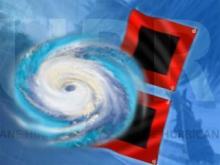- David & Nicole Tepper increase Hurricane Helene relief commitment to $750k
- David & Nicole Tepper increase Hurricane Helene relief commitment to $750k
- McDowell County wildfire spreads to 500 acres, evacuation orders in place
- Evacuations in Caldwell County due to wildfire
- Northwest Houston 'ghost neighborhood' caused by repeated flooding to become latest detention basin
Here's what we know about Tropical Storm Barry and what to expect

CNN — Tropical Storm Barry, the first tropical system to strike the US this year, is just off the Gulf Coast and gaining power.
Here’s what you should know:
How strong is the storm and where is it?
Barry was churning midday Friday in the Gulf of Mexico, with maximum sustained winds of 65 mph, per the National Hurricane Center’s advisory at 11 a.m. ET.
The storm at that time was about 100 miles southwest of the mouth of the Mississippi River and about 115 miles southeast of Morgan City, Louisiana.
Barry is expected to grow into a hurricane by the time it makes landfall, the National Hurricane Center said. It’s likely to be a Category 1.
When and where will it make landfall?
After the wind and rain picks up Friday afternoon and evening across south Louisiana, landfall is expected between late Saturday morning and midday, somewhere along the state’s central coast.
The worst conditions for south Louisiana and New Orleans will kick in Saturday and last into Sunday.
Then, Barry will move inland to the Lower Mississippi Valley, when it should begin to weaken, hurricane center said.
What are the risks?
While wind is a huge threat in tropical systems, the dangers here are posed by heavy rainfall, storm surge and flooding, authorities have emphasized. And the worst conditions could be felt far from the center of the storm.
When it comes to rain, one of the most important factors will be the storm’s forward speed.
It was crawling at 5 mph around midday Friday. And the slower it moves, the more time it has to dump rain on the same places. The forward speed could mean the difference between 5 inches of rain and 20 inches.
It’s also important to look out for bands of thunderstorms. The worst weather during hurricanes is typically found closest to the eye of the storm, but that’s not necessarily the case with tropical storms that are still forming, like Barry.
In storms like this one, the worst conditions — the heaviest rain and the strongest winds — are in the strongest clusters of thunderstorms, which could pop up a hundred miles from storm’s center.
Storm surge will also be a concern, peaking late Friday night through midday Saturday, then lessening after landfall. The surge, which could be felt anywhere near and east of where the storm make landfall, will be maximized during high tide Saturday morning. Areas outside public levee systems are most at risk.